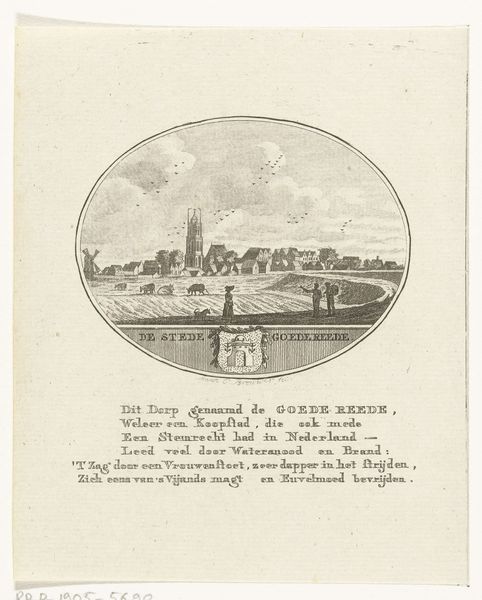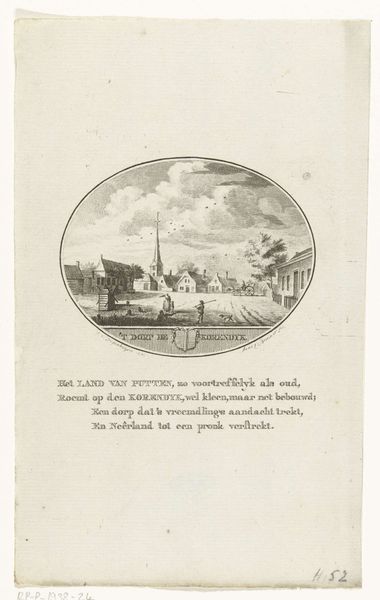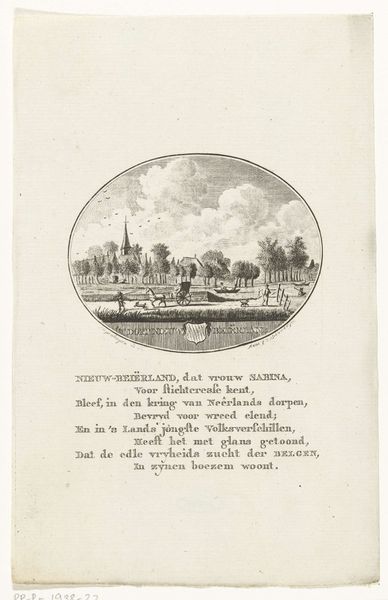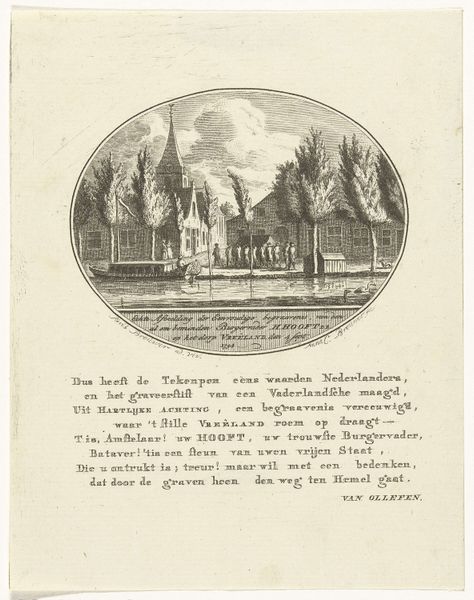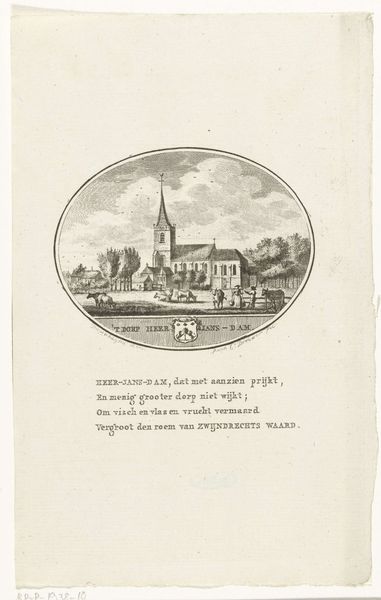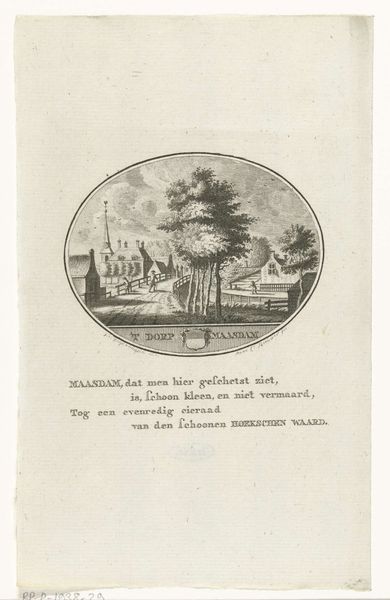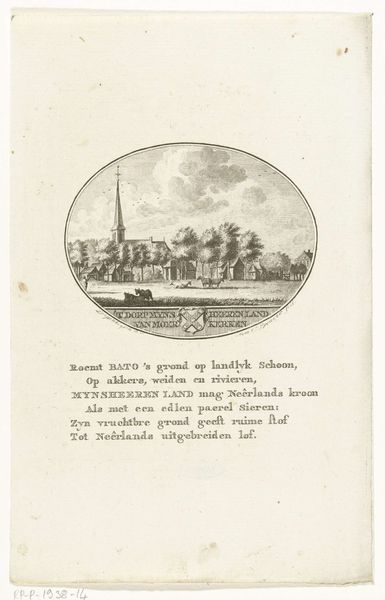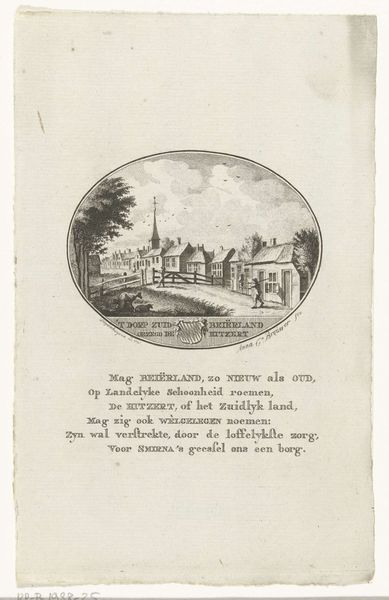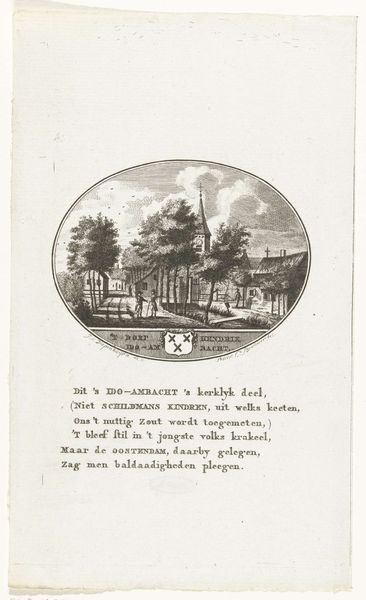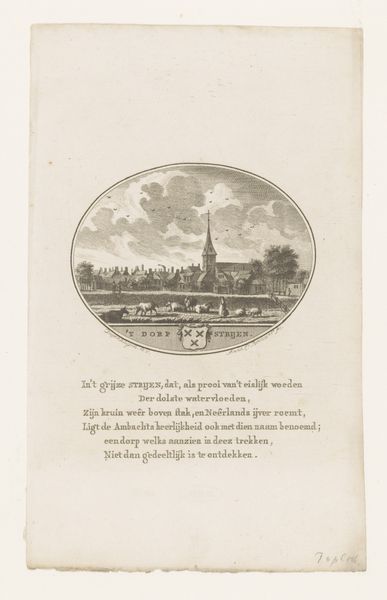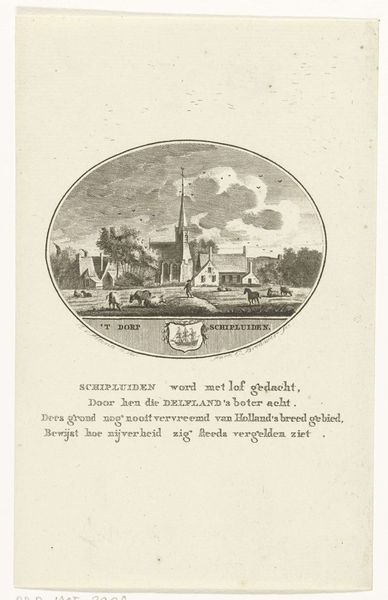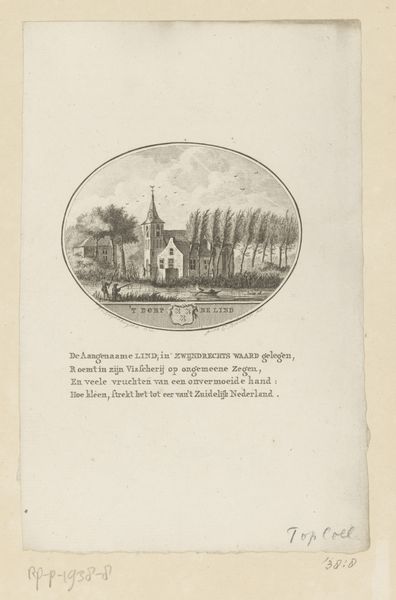
drawing, print, paper, engraving
#
drawing
# print
#
landscape
#
paper
#
cityscape
#
genre-painting
#
academic-art
#
engraving
Dimensions: height 220 mm, width 140 mm
Copyright: Rijks Museum: Open Domain
Curator: We’re looking at Anna Catharina Brouwer's "Gezicht op het dorp 's-Gravendeel," an engraving created sometime between 1791 and 1793, now housed in the Rijksmuseum. Editor: It's quaint! Very neatly composed, almost idyllic. It presents a contained view of a Dutch village, encased in that oval shape. What stands out for you? Curator: The choice of 's-Gravendeel as a subject highlights the period’s interest in documenting local and regional identities. Note how the composition centers on the church steeple, emphasizing the power and presence of the church in daily life. Also, below the image, we have an inscription in verse which presents the landscape as an aesthetic national stage, a "Nederlandsch Natuurtooneel." Editor: Absolutely, and I think it raises some questions. Who is this "Natuurtooneel" for? The engraving is undeniably romanticized. The laborers along the river seem at peace, seemingly unaffected by class divisions or political tension. Is this image contributing to a nationalist narrative, subtly erasing social conflict to project a unified Dutch identity? Curator: A relevant reading. And think about who commissioned and consumed these kinds of images. Certainly, such prints would be circulating within networks of people with shared values and political commitments. Editor: I also consider how the print-making technique flattens the village's essence. The artist offers a picturesque scene, but perhaps that's all we’re really meant to see. Is Brouwer inviting us to ponder these rural inhabitants or simply appreciate the neat composition of their setting? Curator: Your perspective gets to the crux of it, questioning not only what is shown, but the motivation behind it, as well as who benefits. Considering such work, it is important for us to challenge historical narratives that often omit the true reality. Editor: Indeed. It is helpful to question how historical views can frame our readings of these art objects, and to explore ways we can work beyond these constraints to understand and appreciate different perspectives and experiences that historical works can evoke.
Comments
No comments
Be the first to comment and join the conversation on the ultimate creative platform.
